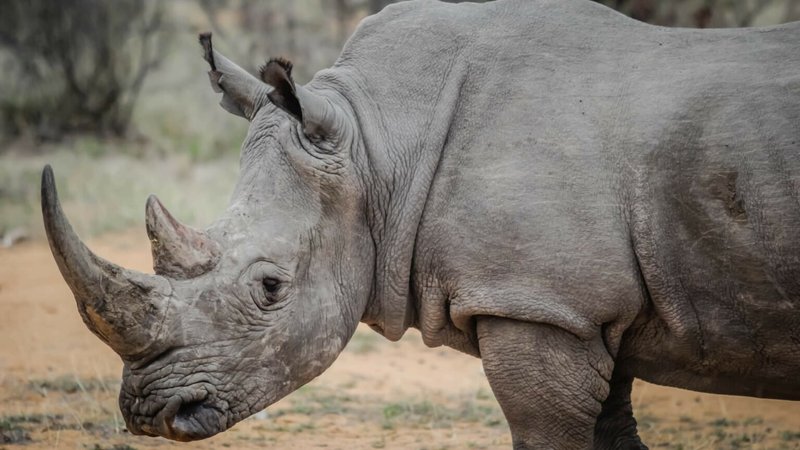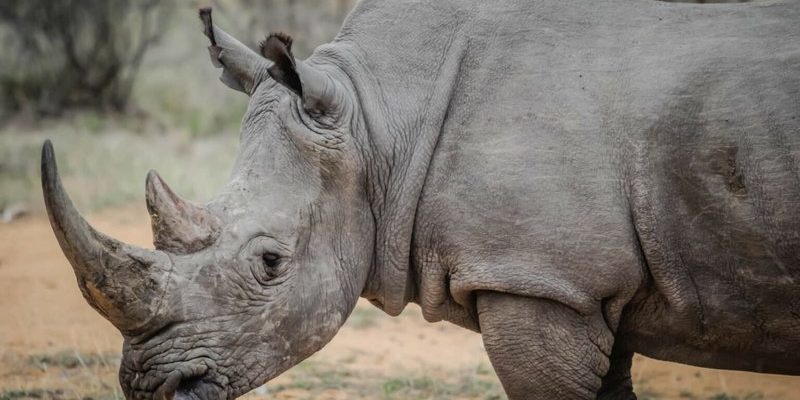
Rhinoceroses, with their impressive horns and battle-ready physique, can be quite unpredictable. Their capability for aggression doesn’t stem from a desire to harm but from instinct and self-defense. What’s fascinating is that while they might look cumbersome, these animals can be astoundingly quick and strong. Let’s dive into what makes rhinoceroses dangerous and what to keep in mind if you’re ever face-to-face with one.
Understanding Rhinoceros Behavior
Rhinoceroses aren’t inherently aggressive creatures; their behavior is often a reflection of their environment and experiences. In the wild, they tend to be solitary animals, which can make them feel vulnerable when approached by anything—especially humans. When threatened, their instinct is to charge. This is especially true for the white rhino, which can run up to 30 miles per hour despite its size. Imagine that! If one feels cornered or provoked, it can easily defend itself.
Additionally, their eyesight isn’t the best. Rhinos rely heavily on their sense of smell and hearing to assess threats. This means they might not always recognize a human until they’re quite close, increasing the chances of an accidental confrontation. Picture this: you’re in the bush, quietly observing wildlife, and suddenly a rhino charges because it thinks you’re a threat. It’s a reminder that respecting wildlife boundaries is crucial for both your safety and theirs.
Types of Rhinoceroses and Their Threat Levels
There are five species of rhinoceros—white, black, Indian, Javan, and Sumatran—and their behaviors can vary widely. The white rhino, one of the largest, is known for its generally calmer demeanor but can be aggressive if startled. On the other hand, the black rhino has a reputation for being more temperamental. Here’s a quick overview:
- White Rhino: Generally docile but can charge when threatened.
- Black Rhino: More aggressive and territorial; quick to defend its space.
- Indian Rhino: Can be unpredictable, especially when with young.
- Javan Rhino: Very elusive and less documented; behavior mostly unknown.
- Sumatran Rhino: Smallest, known for being less aggressive, but still unpredictable.
Understanding these differences helps us appreciate that not all rhinos pose the same level of risk. However, it’s essential to maintain a healthy respect for all rhinoceros species.
The Role of Habitat in Rhinoceros Aggression
The environment where rhinoceroses live plays a significant role in how they interact with humans. Rhinos in protected parks or reserves may be more accustomed to human presence and behave more calmly. However, rhinos that experience habitat loss or poaching pressure can become more aggressive. When their territory shrinks, they might feel threatened and respond defensively to human encroachment.
Imagine trying to protect your home from intruders—it’s likely you’d react aggressively. Rhinos are no different. This relationship with their habitat highlights the importance of conservation efforts and how humans can help ensure safer interactions by respecting these animals’ environments.
Human Interactions and Safety Precautions
If you ever find yourself in a situation where you’re near rhinoceroses, knowing how to act can be the difference between a thrilling encounter and a dangerous one. Generally, it’s crucial to maintain a safe distance. Many wildlife reserves conduct guided tours where trained rangers explain how to behave. Here are a few tips:
- Stay calm: If a rhino approaches, don’t panic. Sudden movements can trigger a charge.
- Respect boundaries: Always obey park rules and maintain a safe distance.
- Travel in groups: There’s safety in numbers, and it’s less likely to attract a rhino’s attention.
It’s also important to remember that while rhinoceroses can be dangerous, they usually prefer to avoid humans. They don’t see us as prey but as a potential threat. By following these precautions, you can help ensure a safe experience while respecting these incredible creatures.
Conservation and Its Impact on Human-Rhino Interactions
As awareness grows about the threats facing rhinoceroses—especially poaching and habitat loss—conservation efforts have become more critical. Protecting rhinos is not just about saving a species; it’s about maintaining the balance in their ecosystems, which can, in turn, affect human safety. Healthy populations live in well-managed habitats, lowering the chances of human-rhino conflicts.
Many organizations work tirelessly to protect rhinos and educate the public about their importance. Supporting such efforts can lead to safer interactions down the line. Plus, it’s a chance to appreciate the beauty of these animals without fear. When humans and wildlife coexist peacefully, everyone benefits.
Educating Ourselves: Understanding the Risks
Many people may not realize that rhinoceroses pose a risk because of their size and reputation as gentle beasts. But education is key. Understanding how these animals behave, their habitats, and the pressures they face can lead to more respectful interactions. There’s a common saying: “Knowledge is power.” When it comes to wildlife, that couldn’t be more true.
By learning about the rhinoceros and its needs, we empower ourselves to advocate for safer practices and effective conservation. It’s not just about avoiding danger; it’s about fostering a deeper understanding and connection with the wildlife that shares our planet.
In conclusion, can the rhinoceros be dangerous to humans? Yes, under the right circumstances. Yet, with the right knowledge, respect, and safety practices, our encounters with these magnificent animals can be both safe and enriching. It’s essential to remember that the more we understand them, the better we can engage with the world around us.
So the next time you think about rhinoceroses, remember their power and beauty. Appreciate them from a distance, support conservation efforts, and maybe even take that safari you’ve been dreaming about—just keep a safe distance, and enjoy the wonder of these incredible creatures.

